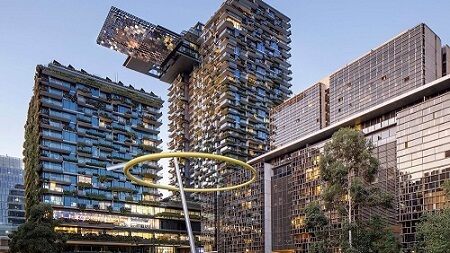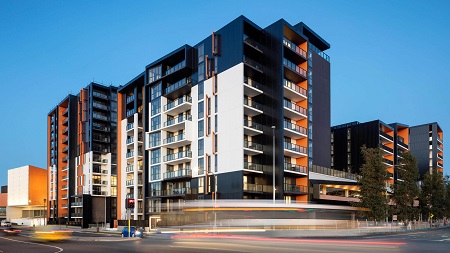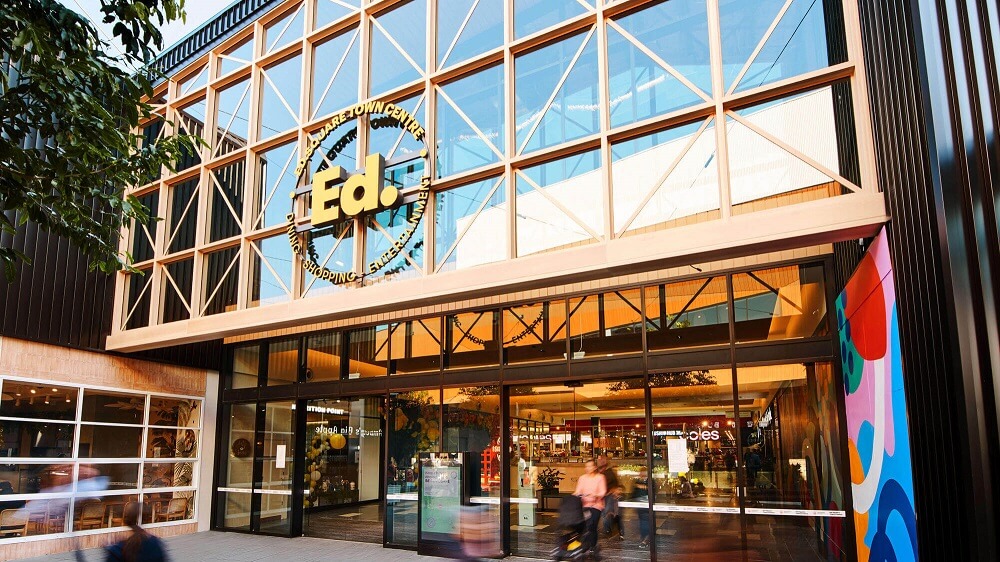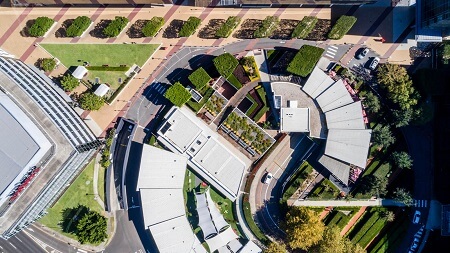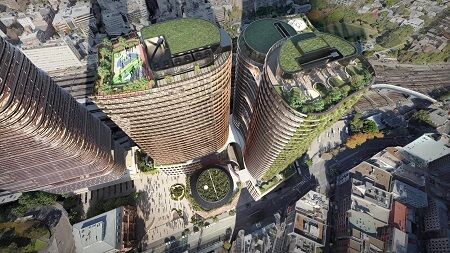From denim factory to stunning residences: How this developer is reimagining Yarraville's future
The iconic Bradmill Denim Factory in Yarraville is set to be transformed into a thriving residential community by Frasers Property Australia – paying homage to the factory’s past while integrating forward-thinking design rich with possibilities.
At its peak, Bradmill produced 36 million square metres of cotton denim each year. Following its closure in the early 2000s, the factory lay dormant for two decades before Frasers Property Australia and partner Irongate purchased the 26-hectare site, with the vision to retain and celebrate its historic legacy.
Spanning 50 years of operation, Bradmill fostered long-lasting connections among its employees – and decades after the looms stopped, the threads of friendship remain as testament to this iconic Australian institution.
That strong sense of connection will play an important role in Bradmill’s future, where a vibrant new neighbourhood will affectionately honour the past.
Bradmill’s beginnings
Founded in 1927 and expanding operations to Victoria in 1940, Bradford Cotton Mills was Australia’s largest textile producer by the mid-century mark. The late 1950s saw the opening of a new factory on Francis Street in Yarraville, and a company name change to Bradmill.
Over the next 50 years, Bradmill embraced cutting-edge technologies and provided employment to thousands of workers, gaining global recognition for innovative denim production.
“Almost enough to wrap around the globe,” says former Bradmill Managing Director, Rob Dickson.

Alongside cotton and denim, the factory produced Colvadure, nylon, polyester, rayon, elastometric stretch yarns, and more. The canvases were used in a vast array of practical products, from firehoses and deckchairs, to tents and tarpaulins.
The company’s nylon tyre cord went into 750,000 Australian-made tyres each year. Bradmill cotton clothed school kids and tradespeople through the King Gee brand. Australian Defence forces and law enforcement agencies sourced high-strength Kevlar materials for personal protection.
In 1956, Melbourne Olympians wore fleecy-cotton fabric tracksuits with material that could be traced back to the iconic factory.
Fabric of society
By the 1980s, Bradmill’s global fashion reputation soared, with exports spanning four continents. Blues Union, Sterling, Westco and Marks and Spencer used Bradmill denim.
Italy was the most successful export market, with iconic brands Max Mara, Moschino and Versace using the stretch denim.
When competition and inflation hit in the 1980s, Bradmill thrived via innovation, venturing into new exports and developing pioneering products. Investment in German state-of-the-art spinning equipment that ran around the clock drew global attention.
“This little place in Yarraville attracted people from Switzerland and Germany because there was nowhere in the world where these machines were running 24/7,” says former Bradmill Operations Manager Bob Green.
“They sent their engineers to find out what we were doing, and to be doing it so well. They couldn’t believe what we were able to do.”
By the 1990s, Bradmill denim was a significant earner and globally renowned, the stretch denim sought after by luxury brands including Dolce & Gabbana. Bradmill pioneered “dirty denim”, a proprietary process creating distinctive denim effects, popularised by the fashion brand Diesel.
“We were small in comparison to other big overseas operations,” says former Bradmill CEO Allan Kerr. “But we were very well regarded because of our quality, innovation, and relationships.”
But the pressure of cheap imports drove Bradmill into receivership, with the factory closing its doors after the turn of the century.
A place for everyone
Bradmill became like a second home to those who worked there – some stayed from apprenticeship to retirement – and this comradery will carry through at Bradmill Yarraville.
Former employee Lynne Carr says “there was something that was extraordinarily welcoming about the whole place.”
Many employees were welcomed into Bradmill by family or friends. Lupco Masalkovski migrated to Australia at 20. Bradmill was his first job, where his uncles worked, and he stayed with the company for 25 years until its closure.

“Everyone encouraged me to learn the English language, and then it all became easier and better,” he says.
Former Bradmill employee Steve Pellegrino, who joined at 19 and stayed for 36 years, says it was a great place to work.
“In a way, it was like a family,” Pellegrino says. “I started there, and never left.”
Lasting connections
At Bradmill, multiple generations often worked side by side. Former Bradmill office administrator Julie Block remembers how people gathered for morning tea, sharing family stories.
“It was a very family-oriented place to work,” she says. “Of all the places I’ve worked, what we had at Bradmill was rare.”
Even decades later, past staff stay in touch. Another office administrator, Jacqui Carton, set up a Facebook page for reunions.
“The people who worked at Bradmill were multigenerational and multicultural,” she says. “That’s why it endured and why there’s longevity to the relationships.”
For many loyal employees, the closure of the factory was a devastating blow.
The loss was summed up by former Bradmill textiles mechanic and supervisor Steve Tjobanakis: “Our family has been torn apart.”
Global influence
In the late 1980s, The Age profiled Bradmill as a microcosm of multiculturalism, with at least 34 home countries present in the 1200-strong workforce.
“We were like the United Nations,” says former employee Georgia Kikidis. “People from all around the world came together.”
Another colleague Vic Muscat agrees. “Many people had escaped wars – Vietnam, Lebanon and Greece – and found a peaceful country, a place to heal.”
Former Bradmill weaving technician James Zhou remembers in the early 1990s, during the Yugoslav wars, employees from Bosnia, Serbia, Croatia, and Macedonia found solace and solidarity, forging stronger friendships despite high tensions in the world.
After arriving from China, Zhou was astounded by the multicultural neighbourhoods around Bradmill. The Frances Street houses with front gardens were new to him.
Former CEO Dickson recalls how the post-war era transformed Yarraville into a culturally diverse neighbourhood that resembled a European enclave.
Looking to the future
Iconic heritage buildings at Bradmill including the boiler house, proofing plant, and dye house will be repurposed for commercial, residential, creative, and community usage.
Nods to the factory will be marked in the redevelopment through features such as street names, urban design and public art exhibitions.
It is designed as a new hub for living, shopping and catch-ups, featuring Bradmill Quarter’s retail precinct and the vibrant dining and community spaces of The Arbory.
The residential neighbourhood is the cornerstone of the precinct, set among parkland and gardens, with a linear park that threads through to connect residents to the vast green spaces and sports grounds of adjacent McIvor Reserve.
Sarah Bloom, Frasers Property Australia’s General Manager Development in Victoria, says the site’s scale, location and distinctive aesthetic make Bradmill an exciting project to watch.
“To be able to plan a new neighbourhood across 26 hectares of land, only seven kilometres from the city, is a remarkably rare thing,” she says.
“It’s got this iconic kind of appearance, with red-brick factory buildings and boiler house quite visible as you head over the Westgate Bridge. So, people all over Melbourne know about it.
“There’s quite of lot affection for it and interest in what the urban renewal of it will entail.”
Originally published as ‘From denim factory to stunning residences: How this developer is reimagining Yarraville's future’.
See more articles on




